You’ll be drawn to the Cosmic Campground Dark Sky Sanctuary for its exceptional stargazing. Nestled in New Mexico, it promises a clear view of the night sky away from city lights.
Increasing light pollution and the campground’s minimal facilities might make planning your visit challenging and affect your stargazing experience.
In this article, I explore practical solutions to these challenges. You’ll learn to maximize your stargazing experience at the Cosmic Campground, ensuring a memorable night under the stars.
Key Things to Know:
- Cosmic Campground, in New Mexico’s Gila National Forest, is an International Dark Sky Sanctuary with stunning night skies.
- Light pollution’s impact is minimal, but prepare for basic amenities and no reservation system.
- Helpful for stargazing: bring telescopes, follow light guidelines, and respect the natural environment.
Recommended For You
Welcome to Cosmic Campground

Location
Nestled in the heart of the Gila National Forest in Western New Mexico, the Cosmic Campground is an incredible spot for stargazers, as I discovered during my visit.
Cosmic Campground is one of the best places to stargaze in New Mexico. Read my dedicated article on stargazing New Mexico and get your free Google Map of all the places I mention.

This unique destination is one of North America’s few International Dark Sky Sanctuaries, offering some of the best night sky views in the lower 48 U.S. states.
FREE STARGAZING CHECKLIST
My 5-page Stargazing Checklist will enhance your astronomical observations.
Follow this free checklist to navigate the night sky with confidence, clarity, and a sense of preparedness for a rewarding stargazing experience.

Infrastructure
Cosmic Campground’s goal is to preserve and enjoy the natural darkness of the night sky. It provides a 360-degree, unobstructed view of the heavens above.
Here are some amenities you can expect at this site:
- A few basic campsites
- Telescope pads
- Vault toilet
- Information kiosk
Despite the minimal infrastructure, Cosmic Campground offers an unforgettable experience for all stargazers, whether amateurs or seasoned astronomers.
Reservations
Cosmic Campground operates on a first-come, first-served basis. There is no reservation system, so you must arrive early to secure a spot for you and your telescope.
You can set up your telescope on one of the designated pads. Just remember to follow the rules and guidelines provided at the information kiosk.
When I visited Cosmic Campground, I was treated to a spectacular stargazing experience, and I felt a part of preserving natural darkness for future generations.
A Look at Dark Sky Sanctuaries
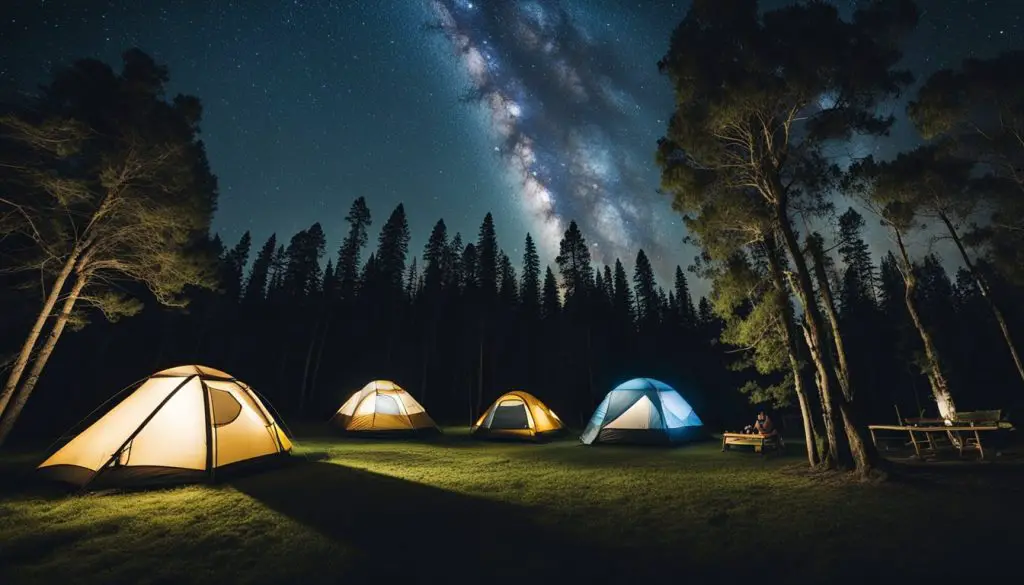
Understanding Light Pollution
Light pollution is caused by excessive and inappropriate use of artificial light at night. You may not realize it, but it impacts the visibility of stars, the natural environment, and human health. Some familiar sources of light pollution include streetlights, exterior lighting on buildings, and illuminated billboards.
In my experience, as night skies become less visible due to light pollution, finding clear stargazing spots like Cosmic Campground has become a rare joy. This is where dark sky sanctuaries come in.
Read my article about New Mexico’s Light Pollution Map for more info on Light Pollution.
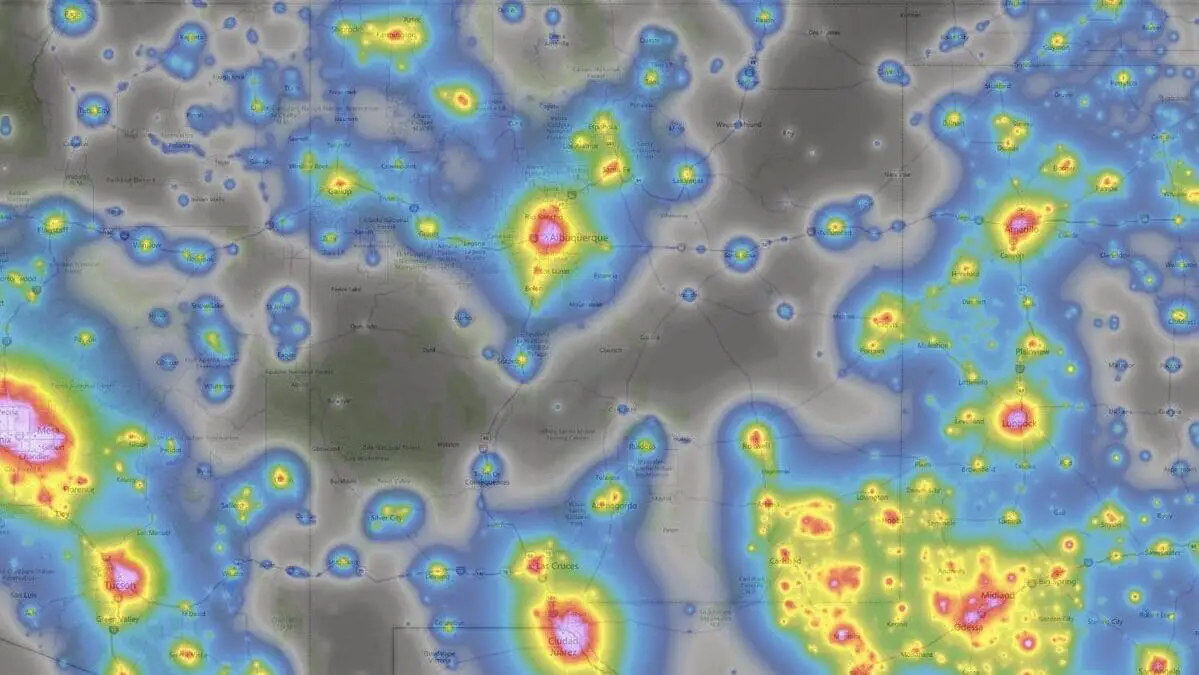
International Dark Sky Places Program
The International Dark-Sky Association (IDA) has initiated the International Dark Sky Places program to protect and preserve dark-sky areas. This program recognizes various locations, such as sanctuaries, parks, reserves, and communities, where the natural night skies are preserved and protected from the effects of light pollution.
Like the Cosmic Campground International Dark Sky Sanctuary, dark-sky sanctuaries are among the rarest and most protected sites. During my visits, I’ve noticed that these sanctuaries, including Cosmic Campground, have exceptionally low light pollution, which makes for incredible stargazing.
To protect these dark sky sanctuaries, you can follow some simple steps:
- Use outdoor lighting fixtures that are shielded and point downward
- Use motion detectors or turn off lights when not in use
- Choose warm-colored LED bulbs to minimize blue light emission
By following these steps, you can help maintain the beauty and wonder of these dark sky sanctuaries for future generations to enjoy.
Stargazing at Cosmic Campground Dark Sky Sanctuary
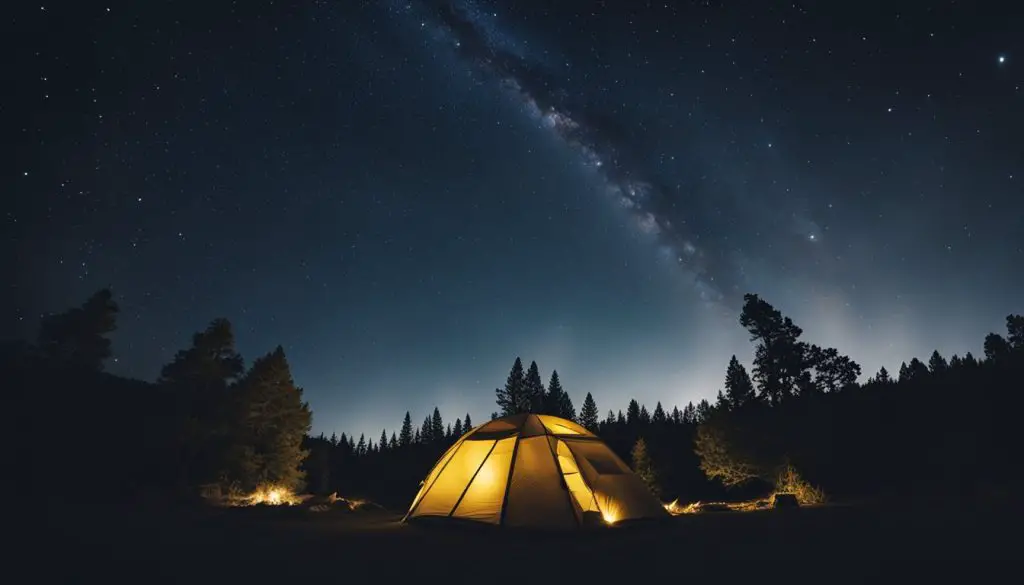
From Evening to Dawn: Sky Views
At the Cosmic Campground International Dark Sky Sanctuary, you’ll experience unforgettable stargazing. The night sky reveals a spectacular display of constellations, planets, and the radiant Milky Way as darkness falls. Since the campground is far from any significant artificial light source, you’re guaranteed a crystal-clear view of celestial objects.
When is Milky Way Season in New Mexico?
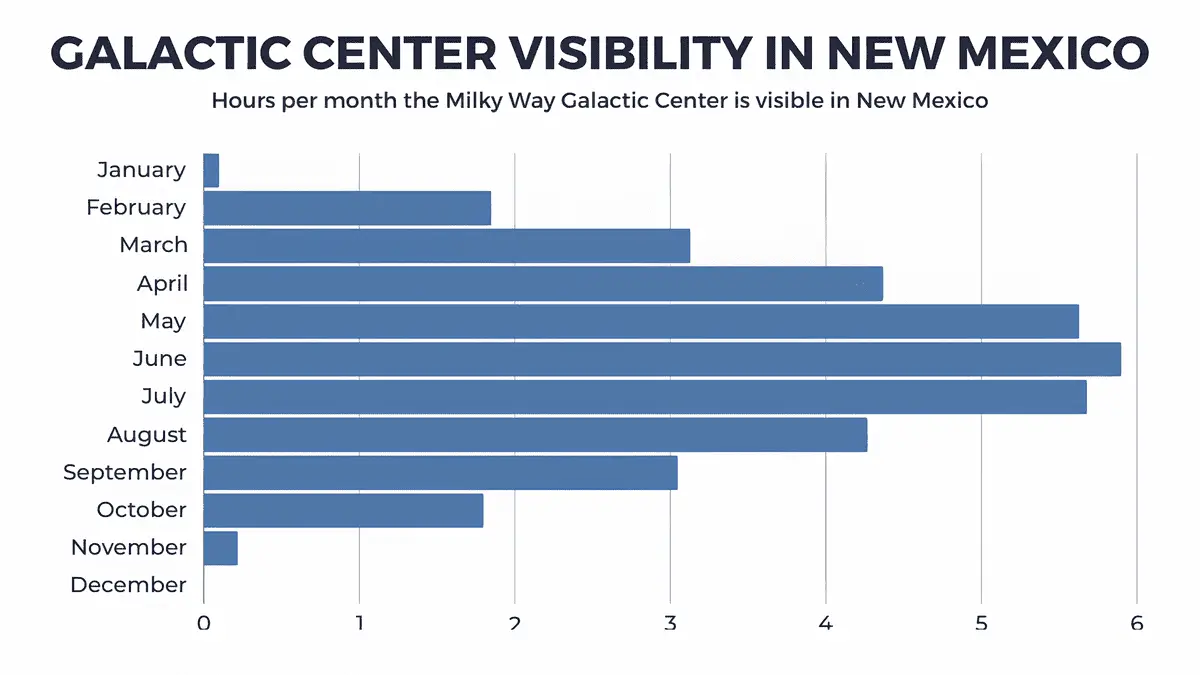
On nights when meteor showers occur, you’ll be thrilled by the sight of shooting stars streaking across the sky. I remember being amazed at how countless stars and cosmic wonders became visible with virtually no human-generated light.
Facilities for Astronomers
Cosmic Campground provides exceptional facilities for amateur astronomers and stargazers alike.
When I visited, here are some of the amenities I found particularly useful:
- Telescope pads: These flat, paved areas are perfect for setting up your telescope and observing the night sky without obstructions.
- 360-degree view: The campground’s design ensures an unobstructed view of the sky, allowing you to explore every cosmos corner.
- Star parties: In collaboration with the Friends of the Cosmic Campground group, the sanctuary often hosts star parties where astronomy enthusiasts gather to share the stargazing experience.
When you visit the Cosmic Campground, remember to bring your telescope or a pair of binoculars. You’ll also want to pack some comfortable seating, warm clothes, and your favorite nighttime snacks. These simple tips ensure an unforgettable stargazing experience under the pristine New Mexico night skies.
Camping Essentials
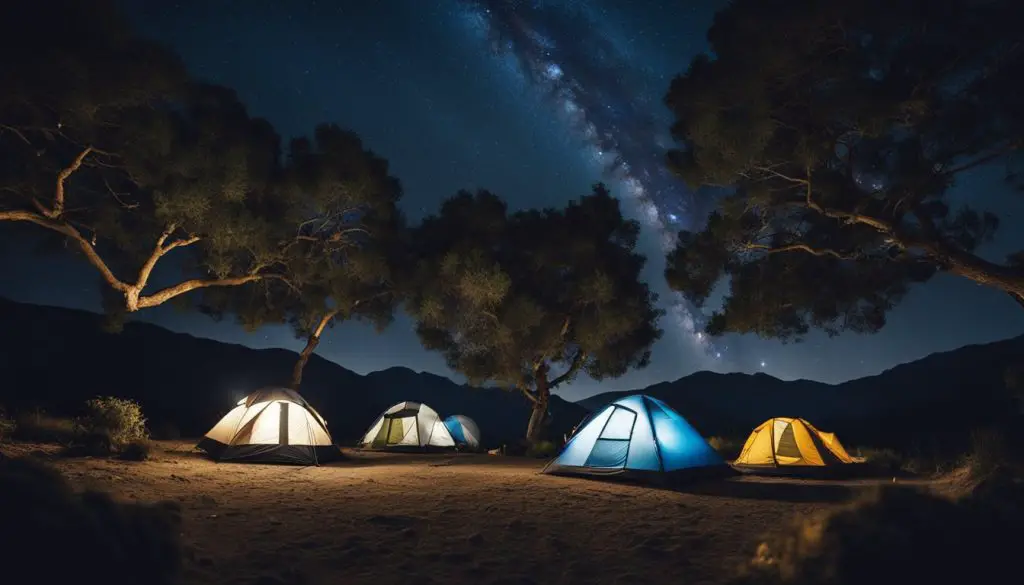
Campsite Amenities
At the Cosmic Campground Dark Sky Sanctuary, you’ll find a simple yet functional setup to make your camping experience enjoyable. The campsite provides basic amenities such as picnic tables to enjoy your meals outdoors and vault toilets for convenience. While there isn’t much shade, the unobstructed 360-degree view of the night sky makes up for it.
Some helpful tips when camping at the Cosmic Campground:
- Bring your own tent and gear
- Pack warm clothes for chilly nights
- Bring a portable stove for cooking, as fires are not permitted
- Carry a flashlight with a red filter so you don’t disturb the view of others
Rules and Guidelines
To ensure an unforgettable stargazing experience, you should follow the guidelines set by the Cosmic Campground.
Respect for the environment is crucial, so remember to adhere to the Leave No Trace principles:
- Dispose of waste properly
- Leave what you find
- Minimize campfire impact (no fires allowed)
- Respect wildlife and other campers
While camping at the Cosmic Campground, please:
- Avoid using bright lights, especially white ones
- Keep noise levels to a minimum
- Be respectful of the telescope pads and do not park on them
By following these guidelines, you’ll contribute to a fantastic experience not just for yourself but for other campers as well. Enjoy a night under the stars and make lasting memories while following the rules and guidelines for an exceptional camping experience.
Preservation and Conservation in Cosmic Campground
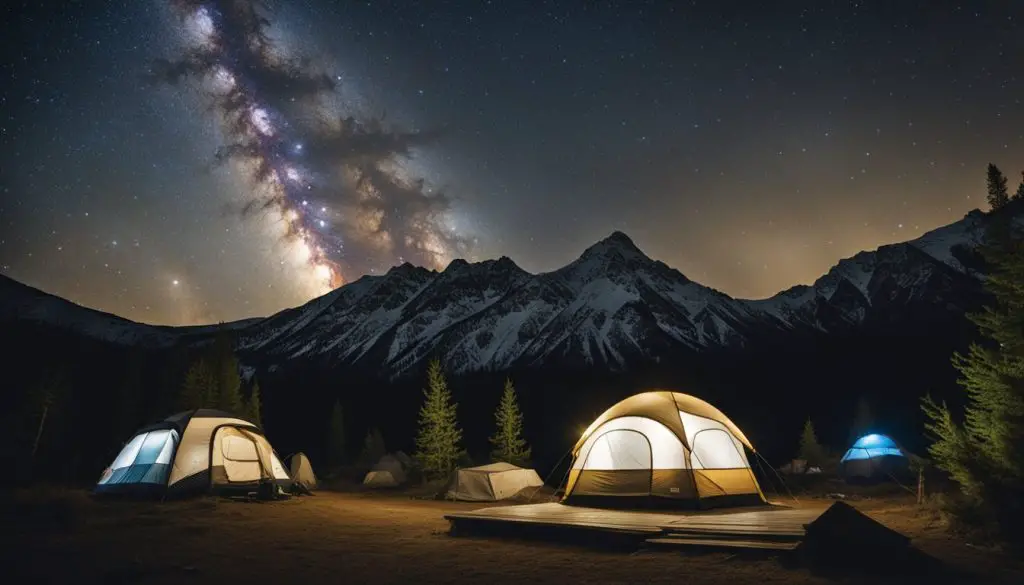
Conservation Efforts
The U.S. Forest Service and local organization Friends of the Cosmic Campground have joined forces to protect and preserve the natural night sky at Cosmic Campground International Dark Sky Sanctuary (CCIDSS). This sanctuary in the Gila National Forest is a gem for stargazing thanks to its pristine skies, far from artificial light pollution. Annual reports, signage, and strict guidelines have been implemented to maintain its beauty and importance.
Here are a few efforts being taken:
- Application and monitoring of the sanctuary’s International Dark-Sky Association (IDA) status
- Posting educational signs about light pollution and its effects on wildlife
Personal Contributions
As someone who appreciates the beauty of the night sky, I often do my part to preserve the sanctuary and contribute to conservation efforts. The founders of Patricia and Al Grauer have set a great example by initiating the project and working closely with the authorities, but your involvement is also crucial.
Here’s what you can do:
- Volunteer: Join the Friends of the Cosmic Campground to help maintain the area and prevent light pollution
- Spread the word: Educate others about the value of natural night skies and the sanctuary’s efforts.
- Follow guidelines: When visiting the campground, respect the lighting rules and minimize your environmental impact.
- Donate: To help their work, you can financially support organizations like the U.S. Forest Service and Friends of the Cosmic Campground.
Remember, preserving the Cosmic Campground Dark Sky Sanctuary relies on cooperation and commitment from people like you who value the wonders of our night sky.
Photographing the Night Sky
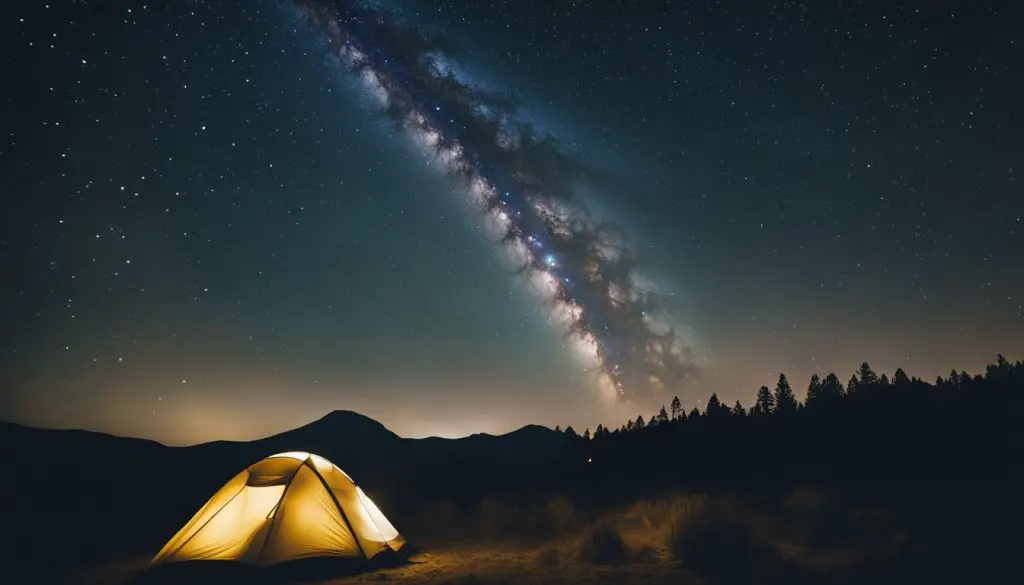
Astrophotography Tips
Astrophotography at the Cosmic Campground Dark Sky Sanctuary (CCIDSS) in New Mexico is a fantastic experience. As an astrophotographer, you’ll appreciate the minimal light pollution and pristine skies.
Here are a few tips to help you capture stunning images:
- Use a sturdy tripod and a remote shutter release to keep your camera steady during long exposures.
- Set your camera to manual mode and focus on a bright star or planet using the live view function.
- Choose a fast, wide-angle lens with a low f-stop number to capture faint details in the night sky.
- Experiment with exposure times and ISO settings to find the right combination for the specific conditions at the CCIDSS.
- Turn off image stabilization, as it can cause blur in long exposures.
Remember, practice makes perfect. Continue experimenting and learning as you go.
Dealing with Light Pollution
While the CCIDSS is an International Dark Sky Sanctuary, you might still encounter some artificial light in the surrounding areas.
To deal with this issue, consider the following steps:
- Use light pollution filters: These filters help reduce the impact of artificial light on your images.
- Choose your location wisely: Move away from nearby light sources to minimize their effect on your photos.
- Include natural elements: Including foreground elements like trees or landscape features can help add depth to your photos and balance the impact of light pollution.
Following these tips at the Cosmic Campground Dark Sky Sanctuary has led to capturing some incredible night sky images. Enjoy your time at the CCIDSS, and remember to share your breathtaking astrophotography with others!
Dive Deeper: Learn More About Cosmic Campground

Suppose you’re in the Las Cruces area and looking for a unique stargazing experience. In that case, the Cosmic Campground International Dark Sky Sanctuary is the perfect destination.
Here’s what you can expect during your visit:
- No reservations are needed at Cosmic Campground, meaning you can stop by spontaneously to enjoy the night sky.
- The best time to visit is between late May and late October, when you can capture perfect photos with a stunning view of the Milky Way.
- The campground is in a dark area, which means it’s in an exceptionally dark region of the lower 48 U.S. states – perfect for stargazing!
To make the most of your visit to Cosmic Campground, follow these simple tips:
- Arrive and set up camp before dusk, as using bright lights and campfires is discouraged.
- Bring warm clothes, since it can get chilly at night.
- Pack a telescope or binoculars to get a closer look at the stars.
As one of only 14 certified International Dark Sky Sanctuaries worldwide, the International Dark-Sky Association recognizes Cosmic Campground’s commitment to reducing light pollution and protecting the natural night environment.
When you visit, you’ll experience the wonders of our universe and help preserve this precious resource for future generations. So, grab your telescope and enjoy the breathtaking view under the stars at Cosmic Campground.
Frequently Asked Questions
What is the best time of year to visit Cosmic Campground for optimal stargazing?
The optimal time to visit Cosmic Campground for stargazing is during the drier months, typically from late spring to early fall. During this period, clearer skies provide the best views of the Milky Way and other celestial wonders.
Are there any specific celestial events or phenomena best viewed from Cosmic Campground?
Cosmic Campground’s dark skies make it ideal for observing spectacular celestial events such as meteor showers, such as the Perseids in August and the Geminids in December.
Can beginners in astrophotography find support or guidance at Cosmic Campground?
Yes, beginners in astrophotography can find support at Cosmic Campground. Occasional star parties and gatherings of astronomy enthusiasts often happen here, where beginners can learn from more experienced astrophotographers and astronomers.
Final Thoughts: Cosmic Campground
As my journey at Cosmic Campground concludes, I’m in awe of the night sky’s timeless beauty.
This sanctuary, a haven for stargazers and astrophotographers, is a testament to the wonders above us. Whether you’re an amateur astronomer or just someone who appreciates the stars, this place offers a unique, undiluted view of the cosmos. The experience here goes beyond just observing; it’s about connecting with the universe in its purest form.
I encourage you to visit, gaze upward, and find your connection with the celestial wonders that the Cosmic Campground Dark Sky Sanctuary so beautifully preserves.
Happy Stargazing in New Mexico!
Additional articles from my Dark Sky Parks series you may enjoy:
- Acadia National Park
- Anza-Borrego Desert State Park
- Arches National Park
- Big Bend National Park
- Bryce Canyon National Park
- Capulin Volcano National Monument
- Cherry Springs State Park
- Copper Breaks State Park
- Death Valley National Park
- Enchanted Rock State Natural Area
- Grand Canyon National Park
- Great Basin National Park
- Haleakala National Park
- Joshua Tree National Park
- Massacre Rim Dark Sky Sanctuary
- Olympic National Park
- Oracle State Park
- Red Rock Canyon State Park
- Rocky Mountain National Park
- Tonopah Stargazing Park
- Yellowstone National Park
- Zion National Park




